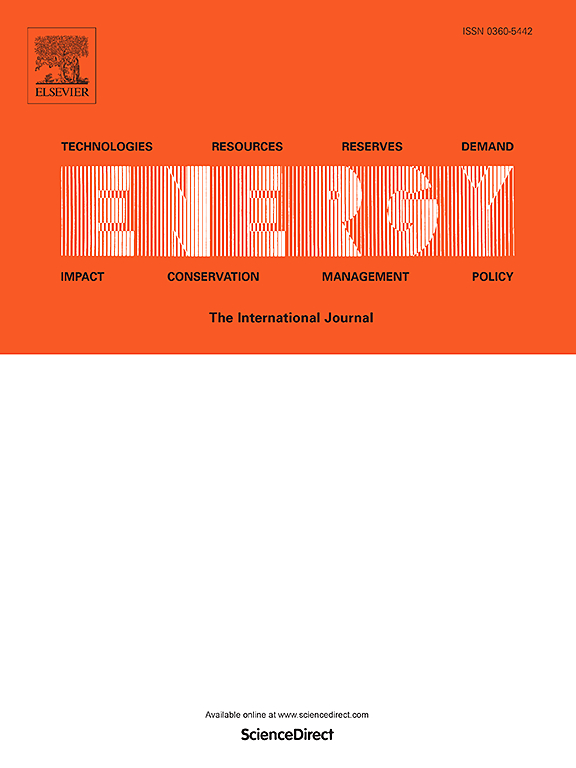异步电机负载的异步惯性建模及对高风电渗透率可再生能源电力系统频率响应的影响研究
IF 9
1区 工程技术
Q1 ENERGY & FUELS
引用次数: 0
摘要
可再生能源电力系统的惯性减小,导致系统频响(SFR)变差。感应电机负载在SFR过程中提供的异步惯性是值得研究的。基于小信号分析方法建立了异步惯量模型,分析了异步电动机运行状态与异步惯量的关系。建立了包含异步惯性的可再生能源电力系统SFR模型,分析了异步惯性对SFR动态特性的影响。异步惯量具有时变特性,受异步电动机初始工况和转矩滑移特性、转子惯量时间常数以及负载机械特性的影响。异步惯性降低了最大频率偏差(FD),从而降低了频率变化率(RoCoF)。最大RoCoF不受异步惯性的影响,但稳态FD降低。在可再生能源渗透率较高的电力系统中,异步惯性对SFR的动态改善更为显著。仿真和实验验证了上述结论。本文章由计算机程序翻译,如有差异,请以英文原文为准。
Modelling of asynchronous inertia of induction motor loads and studying the effect on the frequency response of renewable energy power systems with high wind power penetration
The inertia of renewable energy power systems is reduced, which causes the deterioration of system frequency response (SFR). The asynchronous inertia provided by the induction motor loads in the process of the SFR is worth studying. The asynchronous inertia model is established based on the small-signal analysis method and the relationship between the operating state of the induction motor and the asynchronous inertia is analyzed. The SFR model of renewable energy power systems including asynchronous inertia is established and the effects of asynchronous inertia on the dynamic of the SFR is analyzed. The asynchronous inertia has a time-varying characteristic and is influenced by the initial operating conditions and the torque-slip characteristic of the induction motor, the inertia time constant of the rotor, and the mechanical characteristics of the load. The asynchronous inertia reduces the maximum frequency deviation (FD), which enables the rate of change of frequency (RoCoF) to be reduced. The maximum RoCoF is not affected by the asynchronous inertia, but the steady-state FD is reduced. The asynchronous inertia has a more significant improvement on the dynamic of the SFR in the power systems with high renewable energy permeability. The conclusions are verified by the simulations and experiments.
求助全文
通过发布文献求助,成功后即可免费获取论文全文。
去求助
来源期刊

Energy
工程技术-能源与燃料
CiteScore
15.30
自引率
14.40%
发文量
0
审稿时长
14.2 weeks
期刊介绍:
Energy is a multidisciplinary, international journal that publishes research and analysis in the field of energy engineering. Our aim is to become a leading peer-reviewed platform and a trusted source of information for energy-related topics.
The journal covers a range of areas including mechanical engineering, thermal sciences, and energy analysis. We are particularly interested in research on energy modelling, prediction, integrated energy systems, planning, and management.
Additionally, we welcome papers on energy conservation, efficiency, biomass and bioenergy, renewable energy, electricity supply and demand, energy storage, buildings, and economic and policy issues. These topics should align with our broader multidisciplinary focus.
 求助内容:
求助内容: 应助结果提醒方式:
应助结果提醒方式:


